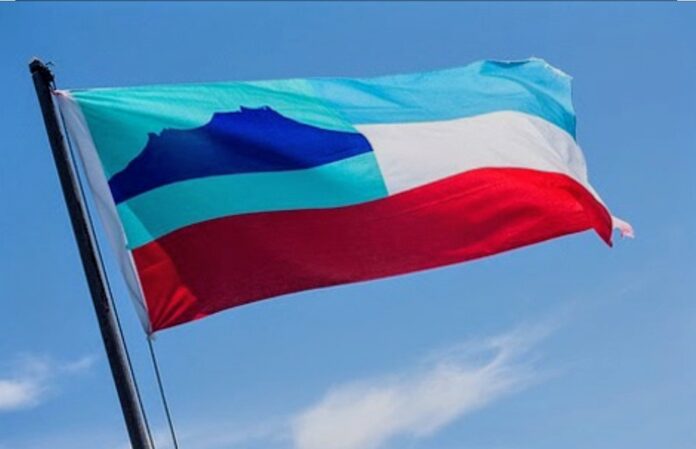Debate erupts after state govt gazettes date as ‘historical day’ without explaining significance‘
This article has appeared in the Scoop.
By Rebecca Chong
KOTA KINABALU – August 31 is not only recognised as the National Day but also Sabah Day now, following the state government’s decision in July to gazette the date as the granting of self-governance and end of British colonial rule.
However, historians and researchers are calling for more clarification to distinguish between the end of self-governance and true independence.

Historian Remy Majangkim, whose research focus is the Malaysia Agreement 1963 (MA63), said the state government’s announcement to gazette the date lacked detailed explanations.
It must be noted, he said, that Sabah – then known as North Borneo – only attained “self-governance” on August 31, 1963, and not full independence.
Real independence from the British, he said, came on September 16 that year, when Sabah, together with Sarawak, Singapore and the Malay peninsula, formed the Federation of Malaysia. Singapore left the federation two years later.
“Between August 31 and September 15, 1963, North Borneo was still under British rule.
“The governor resided in the state residence, and the Union Jack flags still flew on the mast. This indicates that North Borneo was under a ‘caretaker government’ until the new date of commencement agreed,” Majangkim told Scoop.
“(Was) North Borneo a self-governing state? Yes, but it had not achieved independent status.
“The evidence lies in the state constitution attached to MA63,” he added.
The MA63, signed on July 9, 1963, was to have taken effect on August 31 that year. But its coming into force was postponed to September 16 to allow for the United Nations Mission in Borneo, Majangkim said.
This delay meant that between August 31 and September 15, 1963, North Borneo was still under British rule, he added.
Universiti Malaysia Sabah’s historian Bilcher Bala agreed that while Sabah achieved self-government on August 31, 1963, full independence was only realised on September 16 that year.
If August 31 is to be taken as Sabah’s date of “independence”, it would be a political decision, he added – likening it to “registering a marriage on one date and holding the ceremony on another”.
To show that Sabah is an equal partner in forming Malaysia
To others, taking August 31 as the date of Sabah’s independence from the British is not an issue as it is in line with the original intent of the state’s founding fathers.

Sabah Deputy Chief Minister Datuk Seri Panglima Dr Jeffrey Kitingan was one politician who pushed hard for the state government to gazette the date as Sabah’s independence day.
He said it was important for Sabahans to remember it as such, rather than be confused over National Day on August 31, which was when the Malay peninsula achieved independence from the British in 1957.
It is also to demonstrate that Malaya, Sabah, and Sarawak are equal partners in the Federation of Malaysia and thus should receive equal treatment from Putrajaya, Kitingan added.
Seri Jeffrey has said it was important for Sabahans to remember August 31 as Sabah’s independence day rather than be confused over National Day, as the day was gazetted to demonstrate that Malaya, Sabah, and Sarawak are equal partners in the Federation of Malaysia.
“We started celebrating Sabah Day about 10 years ago (unofficially) before it was recognised by the state government, so those participating did it without the government’s permission.
“We were once chased away by the police,” the president of political party Sabah Star, told Scoop.
Whether Sabah achieved independence on August 31 or September 16, 1963, has been an ongoing debate.
Thrown into the mix of views is whether the state was ever independent at all, as its freedom from British rule was immediately followed by membership in the Federation of Malaysia.
Dr Jeffrey said that despite differing opinions, it is a fact that the then-chief minister designate Donald Stephens and other forefathers fought for August 31, 1963, to be the independence date for North Borneo.
On July 5, Sabah state secretary Datuk Safar Untong announced that August 31 had been gazetted as Sabah Day. However, the gazette did not explain the meaning of Sabah Day, nor did it specify that it should be designated as a public holiday.

Sabah Chief Minister Datuk Seri Panglima Haji Seri Hajiji Haji Noor said that the gazetted date was meant to commemorate Sabah Day as a “historical day” but without explanation.
Hajiji, however, added Sabah Day celebrations should not interrupt National Day celebrations.
“We continue celebrating the National Day. We are an independent country – if there are small ways to remember Sabah Day, we will allow it, but it should not affect the National Day celebration,” he said.
Sabah Day was celebrated officially for the first time last year, with the inaugural celebration held in Tambunan after the Sabah cabinet agreed to finally give it the green light.
Hajiji has said that Sabah Day celebrations should not interrupt National Day celebrations but also highlighted that the gazetted date was meant to commemorate Sabah Day as a ‘historical day’.
Forgotten facts
Dr Jeffrey, meanwhile, wants people to remember facts surrounding the formation of Malaysia, particularly Sabah’s path to independence which he said has been “lost in time.”
“On September 9, 1962, our forefathers G.S Sundang (North Borneo), Ong Kee Hui (Sarawak), and A.M. Azahari (Brunei) submitted a letter to the United Nations, saying that they would not participate in the formation of Malaysia unless they were granted independence first.
“It means that independence was a precondition set by Sabah to form Malaysia,” he said.
Another date Dr Jeffrey highlighted to support the notion that Sabah achieved its independence before Malaysia’s formation is August 8, 1963, when the North Borneo legislative body unanimously submitted a resolution declaring Sabah’s independence on August 31 that year, regardless of whether the formation of Malaysia was finalised.
Sabah Day was celebrated for the first time last year.
On August 31, 1963, the last governor of the colony of North Borneo, William Goode, had remarked before leaving Jesselton Court at the end of his duties:
“Today is a historic day for Sabah which marks the end of colonialism and the beginning of independent and self-governing Sabah”, Dr Jeffrey added.
“Sabah’s independence was recognised during the proclamation of Malaysia on September 16, 1963. Sabah, Sarawak, and Singapore were each recognised as a nation, and this status was also acknowledged in their respective constitutions.
“In the proclamation of Malaysia, Sabah and Sarawak were federated with the federation of Malaya.
“This is slightly different from what was stated in Article I of MA63, but this is not odd because the agreement was signed on July 9, 1963, before the process of the formation of Malaysia was completed – when Sabah and Sarawak still had the status as colonies.
“The history must be corrected, recording the series of events that had led to Sabah achieving its independence,” Dr Jeffrey said.
Today, Sabah Day (Aug 31) is celebrated in Padang Merdeka, Kota Kinabalu, with events planned across the state to mark the occasion. It will be a separate celebration from the National Day, which is to be held in Jalan Tun Fuad Stephens here.



